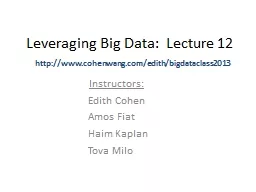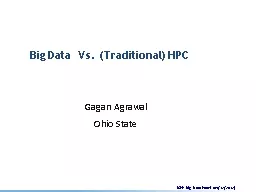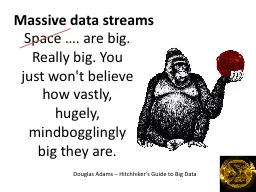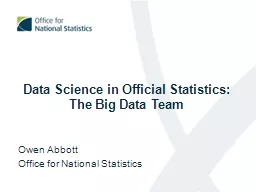PPT-Leveraging Big Data: Lecture
Author : tawny-fly | Published Date : 2015-11-08
12 Instructors httpwwwcohenwangcomedithbigdataclass2013 Edith Cohen Amos Fiat Haim Kaplan Tova Milo Today AllDistances Sketches Applications of AllDistance sketches
Presentation Embed Code
Download Presentation
Download Presentation The PPT/PDF document "Leveraging Big Data: Lecture" is the property of its rightful owner. Permission is granted to download and print the materials on this website for personal, non-commercial use only, and to display it on your personal computer provided you do not modify the materials and that you retain all copyright notices contained in the materials. By downloading content from our website, you accept the terms of this agreement.
Leveraging Big Data: Lecture: Transcript
Download Rules Of Document
"Leveraging Big Data: Lecture"The content belongs to its owner. You may download and print it for personal use, without modification, and keep all copyright notices. By downloading, you agree to these terms.
Related Documents














